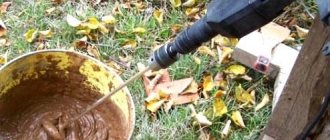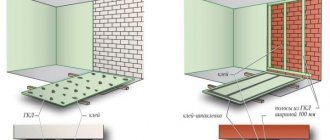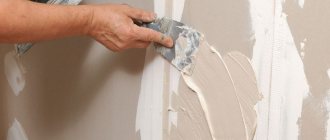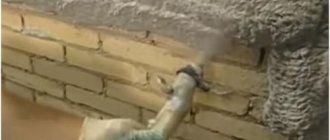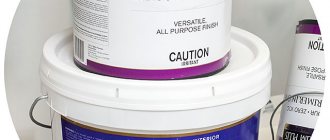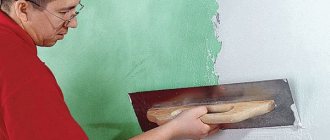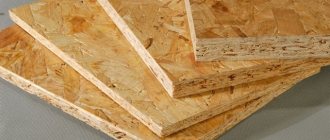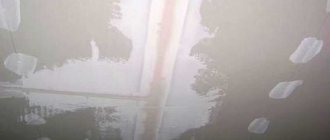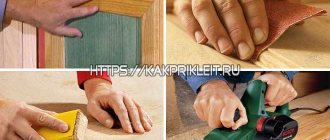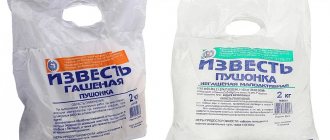Ulysses
15107 0 5
Ulysse June 26, 2017 Specialization: road construction, finishing works.
If you're in a good mood, work doesn't bother you
Modern design completely denies whitewashing in living rooms. But the walls and ceiling under the decorative coating may need putty. This is where the question arises, what to do with the old whitewash - leave it or remove it? We will consider all the pros and cons, leaving the choice up to you.
Dry method of whitewash removal
The dry method involves removing lime using a grinding machine. It is applicable in rooms completely free of furniture, equipment and other items. If it is not possible to remove the furniture, you can cover it with a special construction film and secure it with tape. This option for removing the old finish is much faster than the first. But it is also characterized by high dust content of lime dust. Therefore, you should take special care of protection, and after the work, thoroughly clean the room.
How to remove white coating from a surface.
Only after reaching the non-chalky base can you begin leveling and be confident in the quality. To final prepare the ceiling and walls for finishing, it is recommended to treat them with a special primer to strengthen the bond of the coatings. This ensures a more uniform distribution and application of the leveling layer on the base surface, and also significantly increases its adhesion to the coating. It is also necessary to take into account that there is another type of primer - for primary processing. But in this case, it does not apply.
Conclusion
The quality of work on preparing the base base greatly influences the service life of the finish, regardless of which wall covering is chosen. This process should be taken with full responsibility. If you follow all the recommendations and apply the putty correctly, you will get perfectly smooth walls and ceiling.
Preparing a whitewashed surface for leveling
More recently, whitewashing was one of the most common finishing methods. At a low cost, we achieved a neat and acceptable appearance of the room. However, those wishing to change the interior must understand that most modern finishing materials require careful preliminary preparation of the surface.
In order for the look created after repair to be preserved as long as possible, you should not immediately level the whitewashed surface. It would be better to inspect the whitewash for cracks and swelling. If it holds tightly, then it is possible to do without unnecessary effort. The whitewash should be coated with a special compound that glues the separated particles together and stabilizes the working surface. But the attitude towards penetrating primers today is ambiguous. Their application in practice does not always give the expected result. This is especially true for ceiling finishing. It may happen that the whitened layer cannot support its own weight or the weight of the composition. In addition, the cost of such primers is much higher than that of conventional ones.
Some believe that putty sits well on whitewash if the latter was done in only one layer. But most experts are inclined to completely remove the whitewash, regardless of its condition. This will take more time and effort, but will save you from unpleasant surprises in the form of cracks on the walls and peeling wallpaper.
The fact is that the strength of the finish is achieved due to the adhesion of the solution to the surface. This is difficult to achieve if the wall is covered with a thin layer of lime, on which this putty sits. Accordingly, there is a high risk that the whitewashed base will begin to crumble over time and lag behind the wall along with the leveling layer. There will immediately be a need to start repairs from the very beginning.
Gypsum plaster over lime plaster.
#1 Offline 9Zero9
- Forumets
- 1,175 Posts:
- Car: Nexia
#2 Offline GrounD8632
- Car: Sorento CRDI
I figured out the ceiling, knocked down the old one completely, filled the boards with hydro film on top of the MDF, then stretched the suspended ceiling after the walls. The situation with the walls is more complicated; it is not possible to completely knock off the plaster since two walls are made of adobe. The plaster on the walls is limestone, where the plaster has been knocked off, the rest does not bulge and does not crumble when touched. Has anyone encountered such a situation when applying plaster on top? What is the best plaster to use (which one is better to use) and what primer to use? Do you need a mesh? When I plaster, I’ll just pull it off with a layer and that’s it (without beacons).
MDF for the ceiling, are you confusing anything?))
Volma plaster layer
Boutex mesh, yellow, façade, mesh 5 by 5 mm
Gypsum putty for whitewashing - home craftsman forum.
01.04.2011, 08:29 #6Root Guru
Registration: 06/17/2008 Messages: 760
You said Thank you: 5
Thanked 40 times in 39 messagesReputation: 2010 Answer: Gypsum putty for whitewashing IMHO, washing it off will be easier, cheaper and more reliable than priming. Gypsum adheres much better to the surface of concrete or brick than to soil. The cost of a primer composition is eliminated, which is a big plus. You can wash off the whitewash in a couple of hours. I can’t predict how long it will take to apply the primer; nothing will definitely happen in one pass; after drying, places will appear that will have to be re-painted. All expenses for washing are a bucket of water, a spray bottle and brushes. However, maybe I didn’t understand something, and the topstarter wanted to extract more money from the customer’s wallet? __________________
I recommend drilling water wells in
How to putty walls with your own hands correctly?
Inspect the room, clean the walls and remove all unnecessary items from the room. This will allow you to see the scale of the work and select the appropriate type of putty and tools. Before you putty the walls, you need to remove all the cracks. To do this you need to use a gypsum mixture. The crack needs to be expanded a little in width and depth.
How to putty mesh on polystyrene foam video? After this, we treat the gap with a primer and only then putty.
If you decide to putty yourself, it is better to start by using ready-made rather than dry mixtures. When purchasing a dry mixture, be attentive to the recommendations on the packaging. It is important to prepare the putty from the dry mixture in the correct consistency.
- pour a little water into a clean container
- add dry powder (putty) and mix thoroughly using a simple spatula
- To ensure the mixture is homogeneous, use a drill with a mixer; if necessary, gradually add water
The mixture is ready to be applied to the walls if it has an elastic, uniform structure and does not flow off the spatula. If lumps have formed in the putty, the mixture is too thick; if it flows off the spatula, add dry mixture.
Features of working with cellular concrete
Cellular concrete blocks also have a smooth surface, to which the solution does not adhere well. That's why:
- The surface is sanded: it becomes rough, adhesion improves.
- The base is cleaned of dust and dirt.
- The wall is primed with a special deep penetration compound for cellular building materials, for example “Acrylit-06” for bases with increased water absorption.
- Reinforcement is performed using a mesh that is resistant to alkalis.
- Before applying the first layer of plaster, the wall is sprayed with water.
Cellular concrete requires special preparation before plastering
Plaster over old whitewash
Topic title Forum Author Statistics Last post
Which is better: drywall or plaster?
drywall, plaster, plasterboard
Working with Konstantine drywall
- 29 Replies
- 2
- 31 January 2013 — 07:52
- Last message: Vyacheslav Ukrainian
Does shungite plaster protect against radiation?
Smoking room AlexLazar*
- 125 Replies
- 15
- 27 November 2012 — 09:33
- Last message: bagayama
Seal up an old door
Working with MasMaX drywall
- 8 Replies
- 1
- 29 October 2012 — 14:30
- Last message: serega
How to calculate the consumption of material needed for puttying walls with your own hands?
Before you begin repairs, you need to draw up an estimate. This will allow you to calculate the cost of materials and finances in advance. If you want to putty the walls with your own hands, then savings are important to you.
It is more profitable to use dry mixtures for putty, since a twenty-kilogram bag yields 30 liters of a mixture of good thickness. To calculate, you need to know the size of the room. Manufacturers of putty mixtures claim that per 1 sq.m.
Approximately 1 kg of putty is required (only for 1 layer).
Wall putty consumption table
Before you begin puttying, you must thoroughly clean the walls of grease, paint, dust, falling layers of plaster and wallpaper residues. There are no difficulties when removing paper wallpaper; to do this, it is enough to moisten it well. How to putty drywall with finishing putty video?
But situations often arise when removing old wallpaper becomes a real problem, this applies to glass wallpaper or canvases glued to drywall. If the material fits tightly to the wall and does not form voids or bubbles, you can putty on old wallpaper, but the layer should not exceed 1 mm, otherwise the hardened putty may peel off along with the wallpaper.
- To transfer small portions of putty from a container onto a spatula, it is better to use a small fifteen-centimeter spatula;
- The putty is applied to the surface from left to right, then the putty is removed from the area by moving from right to left;
- The putty should be applied overlapping so that one layer overlaps the other;
- The spatula is brought to the wall at an angle of 30 degrees, which equals the ideal gap between the wall and the spatula;
- You need to move the spatula correctly, diagonally, so that the material is evenly distributed in all directions.
Ready-made putties are very easy to use. There is no need to use a mixer to get a homogeneous mass. In addition, you can save time, and the absence of dust after work will pleasantly please you.
But they also have their drawbacks: large shrinkage.
In addition, when carrying out such work it is necessary to press the spatula into the wall. You should not put too much mortar on the wall, but if this happens, the excess mortar is dispersed along areas of the wall where there is not enough of it. Puttying skills come with experience, so don't despair.
Stains are removed by running a spatula over the area.
Will the putty fall off the ceiling if applied over the whitewash? — consultations
- - putty
- Will wallpaper come off from unspackled drywall? If you don’t putty the drywall and just stick the wallpaper on, will the wallpaper come off when it’s time to change it? I heard that they will be removed without damaging the gypsum board if...
- Is it possible to use non-woven wallpaper in a wooden house in the country? We bought a panel house. Now we are insulating it. We will finish it with OSB boards. Is it possible to glue non-woven wallpaper on them? Or do you still need paper ones? In advance…
- The wallpaper is peeling off from the drywall. Hello! Please tell me. After pasting the wallpaper onto drywall, it began to peel off at the joints, along with the putty, which is why...
- Question about primer and putty Do I need to prepare the walls again after peeling off the old wallpaper and applying paper-backed vinyl?
How to apply plaster on chipboard
Chipboard is not the best substrate for plastering. The material absorbs moisture and swells, therefore, if the need for such finishing arises, the slab must be carefully prepared:
- The surface is coated with a primer that prevents moisture absorption.
- The plaster mesh is attached using self-tapping screws.
- Apply plaster solution.
In the case of chipboard, it is more advisable to use decorative plaster, for example “Acrylit-416”, which is applied to a layer of putty. Another option is to fix a sheet of plasterboard on the chipboard and calmly plaster this base.
Problem surfaces
We seem to have figured out the theory. Now let's move on to specifics. Let's look at some problematic surfaces and find out whether leveling coatings can be applied to them.
Whitewash
Is it possible to putty over whitewash?
The answer depends on what the surface was whitened with.
- It is better to remove lime deposits by first soaking them with water. The tool is a hard steel spatula. As a last resort, the whitewash is tapped, the flaking layers are removed from it, while the rest of the surface is primed with a penetrating acrylic-based primer and puttied with gypsum putty.
Soaked lime can be easily removed with a spatula.
- Chalk whitewash is washed off with plenty of water. Primers that transform chalk into a stable surface exist in principle, but their price and inaccessibility call into question the feasibility of the undertaking.
- You can safely paint over water-based paint with the same type of paint, after priming the surface. But it is undesirable to use different compositions: acrylic water-dispersion paint will not adhere reliably to silicate paint.
Clay
Is it possible to putty on clay?
None of the widely used types of putty adheres to clay walls with any reliability. Sooner or later, the home owner will be faced with surface delamination. Primers also do not change the picture any radically.
What can you do with a clay wall on a brick or wood frame?
- Putty small defects not with cement, gypsum or acrylic, but with clay putty, followed by whitewashing with chalk. Clay adheres perfectly to clay.
- Clean the walls down to the base and re-plaster them with a cement or gypsum mixture, after which putties can be used without restrictions.
The wall is stripped down to shingles and plastered again.
- Plaster the wall using a grid and then putty the entire surface. A steel or fiberglass mesh is used, fastened with disc dowels.
- Finally, in the case of a wooden frame, the simplest solution is to cover the wall with plasterboard and fasten it to the boards with long self-tapping screws. Further instructions are obvious: the seams and screw heads are sealed with gypsum putty and the seams are reinforced with serpentine or fiberglass.
Polyurethane foam and penoplex
Is it possible to putty foam after installing windows or doors? And insulation - penoplex or polystyrene foam?
It is possible and necessary. The porous surface has excellent adhesion to all putty mixtures without exception. The only problem - insufficient rigidity - can be solved by increasing the thickness of the applied layer.
Let's look at all the subtleties using the example of puttying polyurethane foam.
How to do this work yourself?
- The foam is cut with a sharp knife to a depth of 5-7 millimeters from the surface of the frame or door frame.
The ideal tool for this job is a thin utility knife.
- The resulting cavity is filled with plaster - cement (from the street side) or gypsum (from the room side).
- After drying and the accompanying slight shrinkage, the surface of the plaster is puttied. As a final coating, it is better to use a thin layer of acrylic putty for exterior use.
Important: on a large surface area, the putty must be reinforced with fiberglass mesh.
On what substrates is plaster applied?
Each type of plaster exhibits good adhesion to certain substrates.
- Cement-lime
Suitable for exterior and interior decoration, including surfaces with high humidity or temperature extremes. The lime in the composition makes the solution plastic.
Cement-lime plaster is well applied and lasts a long time on brickwork, monolithic concrete, cement-bonded and asbestos-cement boards (CSB and ADC), wood, chipboard and OSB. It can also be installed over durable old paint and tiles.
- Plaster
The best option for finishing in heated rooms. The plaster has good heat and sound insulation, is plastic and easy to use.
Gypsum plaster is applied to brick, monolithic concrete, masonry made of cellular and lightweight concrete, DSP and ADC boards, wood, chipboard and OSB. If the old paint or tiles are holding up well, this material can also be applied over them.
- Decorative plaster
Decorative plaster is plastic, quickly gains strength, and after drying it forms a vapor-permeable layer that does not crack. Suitable for use inside and outside the building, including in rooms with high humidity. It is possible to choose between acrylic, mineral, silicate or silicone plaster.
This material is applied to surfaces made of monolithic concrete, masonry made of aerated concrete blocks, and a wall covered with cement plaster. It is also applied to plasterboard (GKL), gypsum fiber sheets (GVL), glass-magnesium sheets (SML), DSP and ADC.
Author's rinsing products
Such recipes, tested by time and practice, are a successful combination of low price + maximum quality. They come to the rescue if there is no desire or opportunity to buy special products.
The price is ridiculous, but the benefits are great
Original recipes:
- For 5 liters of water 1 tbsp. l. vinegar + 2 caps of bubble bath;
- For 10 liters of water 2 tbsp. l. soda + 3 tbsp. l. vinegar (good for lime);
- Dilute 2 tbsp in 5 liters of warm water. l. grated laundry soap + 4 tbsp. l. soda;
- Paste from 2 tbsp. l. flour per 1 liter of water. Apply to the wall, let dry, remove with a spatula;
- Glue pieces of wallpaper/newspaper to the surface with glue, leaving a corner free. After drying, peel off the paper layer, like a label from a jar. Whitewash and weak plaster will come off with the paper.
Test the product on a small area. If you like the result, feel free to start working.
